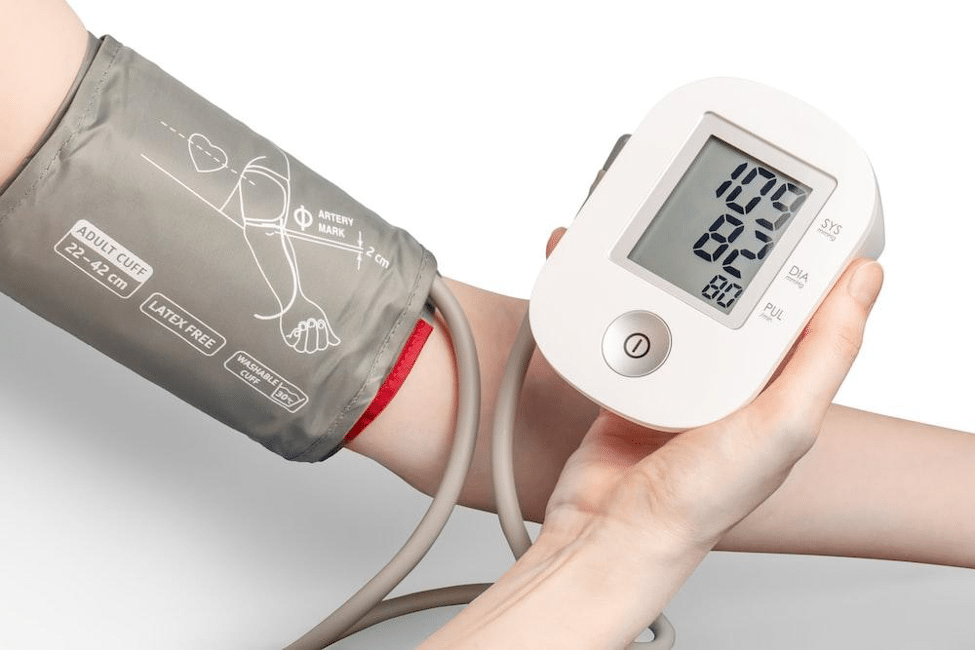Two dietary methods have become increasingly popular in the past few years due to their effectiveness in promoting weight loss and enhancing overall health.
These are Intermittent Fasting and the Keto (Ketogenic) diet.
As these eating practices continue to make waves across the globe, they have spurred numerous stories of success, prompting many to ask: Which of the two methods is better? Which one can help you lose more weight? Can they complement each other? And more importantly, which is the best fit for you?
Understanding the Diets
Intermittent fasting is a dietary strategy that alternates between periods of food consumption and periods of fasting. Rather than focusing on what you consume, intermittent fasting emphasizes when you eat – this is what we refer to as an ‘eating window.’
Different types of intermittent fasting exist, each with its specific fasting intervals and eating windows. Take the 16/8 method, for example, where you spend 16 hours of the day fasting and reserve an 8-hour window for eating.
The beauty of these various intermittent fasting diets is their flexibility – they allow individuals to pick an eating pattern that best aligns with their lifestyle. The shared objective across these diets is to confine the time frame in which food is consumed.
The ketogenic, or ‘keto,’ diet is a high-fat, low-carb diet plan that was initially created to treat epilepsy in children. The primary objective of the ketogenic diet is to push the body into a metabolic phase known as ketosis, where fat is burnt for energy instead of carbohydrates.
A standard keto diet derives around 70-75% of daily calories from fats, 20% from proteins, and a minimal 5-10% from carbohydrates. This is a stark contrast to the standard Western diet, which is typically carbohydrate-heavy.
A Detailed Look at How They Function
Intermittent Fasting
There’s more to intermittent fasting than just a weight management tool. It is a shift in lifestyle, offering a slew of health benefits. Let’s take a deep dive into the mechanisms behind it:
Addressing Insulin Resistance and Sensitivity:
Intermittent fasting has a profound impact on insulin regulation, especially during the last part of the fasting period. When you confine your caloric consumption to specific time frames within the day, the requirement for insulin decreases. This results in enhanced insulin sensitivity and better regulation of blood sugar. Various studies indicate that intermittent fasting can mitigate insulin resistance, hence reducing the susceptibility to type 2 diabetes.
A Closer Look at Time-Restricted Eating:
Time-restricted eating is a prevalent form of intermittent fasting. This approach confines your food intake to a certain number of hours daily. A common example is the 16/8 method, which consists of fasting for 16 hours and eating all your daily calories within an 8-hour window.
Fasting can be difficult if you’re used to eating regularly. Some key things you can do during your fast like drinking black coffee or electrolytes can make it much easier.
Impact on Weight Regulation and Chronic Diseases:
Intermittent fasting shows encouraging results in weight regulation. By constraining the food intake period, you’re likely to ingest fewer calories, contributing to successful weight loss. Apart from weight management, intermittent fasting can yield various health benefits, including reduced risk of several chronic conditions. Research suggests intermittent fasting may diminish inflammation and lower the risk of heart disease and certain cancers.
The Keto Diet
The ketogenic, or “keto” diet, is a low-carb, high-fat diet designed to push your body into a state called ketosis, which ultimately helps you lose weight. Let’s break down its workings:
The Function of Ketone Bodies and Fatty Acids:
When the intake of carbohydrates is drastically cut back, the body resorts to burning adipose tissue or fat for energy. This process produces molecules known as ketone bodies, which act as fuel for cells in the brain and other organs. This state, termed ketosis, prompts your body to be remarkably efficient at utilizing fat for energy.
Exploring Carbohydrate Restriction and Fat Reduction:
The keto diet necessitates limiting carbohydrates to as little as 20 grams per day or less, substituting them with foods high in fat and a moderate amount of protein. This forces your body to rely on fat as its primary energy source rather than carbohydrates, leading to a reduction in fat stores and weight loss.
Potential Health Consequences, Including Heart Disease Risk and Kidney Stones:
The keto diet is celebrated for its rapid weight loss results and potential health advantages, such as lowering insulin levels and enhancing cognitive function, but it’s crucial to acknowledge potential downsides.
Due to the diet’s high-fat nature, unhealthy fats and processed keto foods can cause inflammation. The diet may also precipitate kidney stones due to the high consumption of animal proteins and a decrease in citrate, a compound in urine that helps prevent the formation of kidney stones.
The initial transition to the keto diet can be challenging, often leading to “keto flu,” symptoms include fatigue, nausea, and dizziness.
By understanding the mechanisms behind these diets, you’ll be better equipped to decide whether intermittent fasting or the keto diet is the right fit for your lifestyle and health objectives.
Always seek advice from a healthcare provider or a nutrition expert before embarking on any new diet regimen, or choosing between intermittent fasting vs. keto as they can provide tailored guidance based on your current health and nutritional needs.
Intermittent Fasting versus Keto: Analyzing Differences and Similarities
Effective Weight Reduction
Interventions like intermittent fasting and ketogenic diets have been in the limelight recently, having proved effective for many in shedding extra pounds. However, the strategies they employ and their results can differ notably.

Shedding Pounds, Rapid Weight Reduction, and Sustaining Lost Weight
By restricting your calorie intake to certain time windows each day, intermittent fasting naturally reduces the amount of food you consume, leading to fewer calories and potential weight loss. But remember, the true success of weight reduction is not simply about the numbers on the scale – it’s about reducing body fat while preserving or even increasing muscle mass.
The ketogenic diet, conversely, emphasizes a high-fat, low-carbohydrate consumption plan. This approach pushes the body into a metabolic state known as ketosis, thus boosting the body’s efficiency at using stored fat for energy.
The ketogenic diet requires you to strictly follow the rules about how much protein and carbohydrates you can ingest since if this is not done right, the diet can cause more side effects with little upside.
The Importance of Caloric Restriction, Consuming Fewer Calories, and Caloric Deficit
Regardless of the diet plan, the fundamental principle of weight loss remains: consume fewer calories than expended—a phenomenon known as a caloric deficit. Intermittent fasting can naturally create a calorie deficit as eating within a specific window can limit calorie consumption.
While the ketogenic diet is not explicitly about caloric restriction, it may inadvertently lead to a lower calorie intake. High-fat and protein-rich foods can be more satiating, thereby reducing overall appetite and lowering calorie intake.
Health and Lifestyle Consequences
Examination of Blood Pressure, Hypertension, and Blood Glucose Levels
Both dietary plans can benefit health indicators like blood pressure and blood glucose levels. Intermittent fasting can enhance insulin sensitivity and reduce blood pressure, a significant benefit for hypertensive individuals. The periods of fasting may help stabilize blood sugar levels, which can be an effective strategy for individuals managing type 2 diabetes.
The ketogenic diet can also positively influence these health parameters. By decreasing carbohydrate consumption, blood sugar levels can be better regulated. Additionally, weight reduction achieved through the ketogenic diet can lower blood pressure.

Regular Eating Habits versus Meal Skipping
In terms of lifestyle adaptation, intermittent fasting and the ketogenic diet necessitate different attitudes toward eating. Intermittent fasting requires distinct periods of fasting and eating, which may mean skipping some meals, while the ketogenic diet doesn’t necessitate alterations to meal timing. The choice between the two may depend on one’s habitual eating patterns and daily routines.
Potential Obstacles, Including Mineral Deficiencies and Potential Health Risks
Despite the possible advantages, both diets present potential obstacles. With intermittent fasting, one might experience feelings of hunger, moodiness, or reduced energy levels during periods of fasting.
In contrast, the shift to a ketogenic diet can lead to the ‘keto flu’, symptoms of which include headaches, fatigue, and moodiness due to the drastic cut in carbohydrate consumption. Additionally, the ketogenic diet may lead to mineral deficiencies if not managed meticulously due to excluding certain fruits, vegetables, and grains.
Merging Intermittent Fasting and Keto in Your Lifestyle
Exploring the Benefits and Challenges of Synchronized Intermittent Fasting and Keto Diets
Blending the principles of Intermittent Fasting with a Keto diet could serve as a powerhouse for those aiming for weight loss since both result in a low carb diet.
This fusion, being rooted in the core objective of utilizing fat as a primary energy resource, can expedite weight loss more significantly compared to adhering to either diet individually. The Keto diet accomplishes this by virtually allowing no carbs, while Intermittent Fasting orchestrates it through a tactical calorie consumption window, eventually leading to a substantial calorie deficit.
A noteworthy plus of marrying these two dietary approaches is the potential enhancement in metabolic adaptability. This heightened efficiency in the body’s ability to alternate between carbs and fat as a primary energy source contributes to stable energy levels throughout the day.
Despite these benefits, combining these diets can present unique challenges. The initial weeks might test your endurance as your body adapts to a double whammy – utilizing fat as an energy source and accustoming itself to restricted feeding periods. This could lead to transient side effects like fatigue, increased appetite, irritability, or the notorious ‘keto flu’.
The amount of nutrition you eat can come into question when you combine Intermittent Fasting with a Keto diet. Vitamins and electrolytes are some essential fasting supplements to take.
Given the food group restrictions of Keto and the time-bound eating nature of Intermittent Fasting, ensuring a well-rounded nutrient profile requires meticulous meal planning and supplementation.
Impact on Metabolic Adaptability and Potential to Increase Lifespan
Combining intermittent fasting and a keto diet can bring about remarkable shifts in metabolic adaptability. These practices equip your body to seamlessly transition between carbs and fats as energy sources, which results in improved energy levels, elevated physical performance, and superior control over hunger pangs and blood sugar.
When it comes to enhancing longevity, the research landscape is still maturing. Yet, early insights from animal studies point towards the potential of intermittent fasting to extend lifespan by instigating biological processes that decelerate aging and fend off diseases. Although human studies are less decisive, there’s a sense of cautious optimism that these benefits could apply to humans.
By curbing the risk of chronic conditions such as heart disease and enhancing vital metabolic health markers like blood pressure, blood sugar levels, and body weight, the fusion of intermittent fasting and a keto diet might pave the way to a healthier and potentially longer life.
Important Factors to Consider
When pondering over the choice between intermittent fasting and a ketogenic diet, it’s crucial to pay heed to certain practical aspects. Here are some of those to contemplate:
Figuring Out Your Schedule: Eating Duration and Dieting Days
In the context of intermittent fasting, the frequency and timing of your fasting depend on the specific fasting plan you adopt. For instance, if you opt for the widely accepted 16/8 method, you’ll be fasting for a continuous period of 16 hours, with an 8-hour interval reserved for eating. Another alternative is the 5:2 method, where you eat normally for five days a week while reducing your calorie intake considerably for the other two days.

The ketogenic diet, however, is a daily commitment. You maintain a daily routine of consuming a limited amount of carbohydrates, typically under 50 grams, while boosting your intake of healthy fats. The timing of meals can be more flexible, yet the food content must adhere to the keto guidelines.
Understanding Your Current Eating Habits and Emphasizing Nutritious Foods
Before embarking on either intermittent fasting or the ketogenic diet, take a moment to reflect on your current dietary habits. Are your meals usually carbohydrate-dominant? Do you prefer consuming three large meals or several smaller ones throughout the day? These factors will influence how seamlessly you transition to either of these diet strategies.
Regardless of the diet approach you select, it’s critical to eat nutritious foods. Whether you are in your designated eating period for intermittent fasting or cooking a keto-compatible meal, opt for foods rich in essential nutrients. Think along the lines of vibrant veggies, lean sources of protein, and beneficial fats such as avocados or a handful of nuts. The ultimate aim isn’t just weight loss, but overall well-being and health.
Hydrating, Ending Your Fast, and Satiety
Staying hydrated is essential, irrespective of the diet you follow. During the fasting intervals in intermittent fasting, consuming water isn’t just allowed – it’s recommended. Some types of fasting even permit the intake of zero-calorie beverages, including black coffee or herbal tea.
When it’s time to break your fast, it’s generally suggested to start with a smaller meal rather than a large, heavy one. This approach allows your digestive system to return to action, preventing potential discomfort gradually.
With the keto diet, the high fat content often leads to feeling full for longer periods, thus reducing the quantity of food consumed. However, should you experience hunger, it’s better to eat additional keto-friendly foods rather than straying from your diet plan.
In the final analysis, be it intermittent fasting, a ketogenic diet, or a mix of both, the most important aspect is to be in tune with your body and make adjustments as required. Healthy weight loss is a long-term commitment, not a quick-fix solution. Patience is key as your body adapts to the new dietary routines.
The Takeaway
Both intermittent fasting and keto can provide a host of great health effects on the body like metabolic flexibility which inevitably prevents fat accumulation. When the body’s metabolic state is improved, everything from mood, endurance, to focus and stress levels are improved in the body as well.
Although both diets do have similarities, the ketogenic diet focuses on what we eat, while intermittent fasting focuses on when we eat. Both have their benefits, and perhaps you need to try both to see which is the right fit for your unique lifestyle and health condition. Don’t forget to consult a health care professional to ensure that these diets are right for you.

